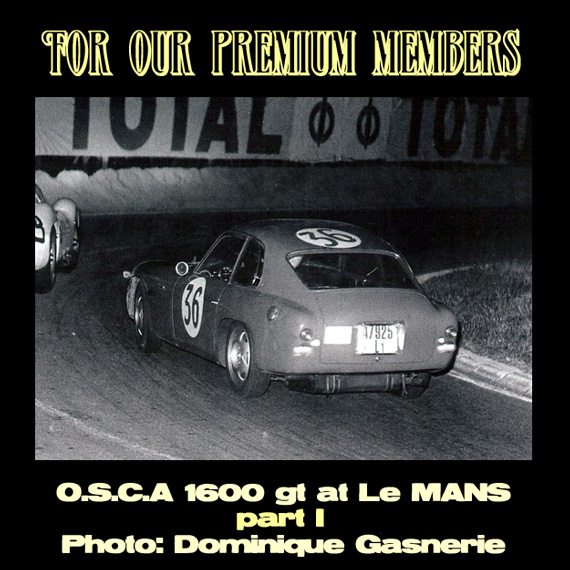By Antony Childe-Freeman and Mark R. Brinker
You’ve already read about the exploits of the OSCA 1600GT at Le Mans. Here’s a bit more history of the car itself, with a focus on another ex racer, S/N 0094.
The OSCA 1600 GT Zagato is perhaps one of the most underappreciated and misunderstood GT cars of the post war era. Signaling a close to the Maserati brothers dynasty and remaining in the shadow of the legendary OSCA MT-4 (overall winner at Sebring in 1954), the 1600 GT emerged with a very different goal in mind; to produce an agile and stylish coupe. The results were an international success.
The OSCA 1600 GT Zagato prototype debuted at the 1960 Turin Auto Show. The car was tested by Ludovico Scarfiotti (Auto Italiana Sport, February 1, 1961), receiving rave reviews. The Maserati brothers knew they had a winner. OSCA 1600 GT Zagato production quickly commenced.
An All-New Tubular Chassis
The 1600 GT was built on a specially designed tubular OSCA chassis, not on a Fiat 1500 or 1600 unit as some authors have incorrectly described. The chassis for the 1600 GT was constructed at the OSCA factory with some components sub-contracted out. The wheelbase was 2250mm (88.5 inches), 50mm longer than the MT-4. The majority of cars were equipped with independent suspension front and rear, although a few cars had live axle rear suspension. The rear live axle, also known as the Ponte Rigido (PR), was a less expensive alternative, but also used on the Le Mans Experimental flat topped OSCA Zagato s/n 0036.
Alberto Luti in 0094 before the start of the Ascoli-Colle San Marco event.


